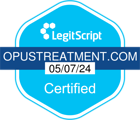Robaxin vs Flexeril: Comparing Two Muscle Relaxants for Pain Relief
Muscle relaxants such as Robaxin and Flexeril are commonly prescribed for the relief of muscle spasms caused by musculoskeletal conditions. These medications are part of a broader category of skeletal muscle relaxants that help manage discomfort from acute musculoskeletal pain. This blog provides a detailed comparison of Robaxin and Flexeril, highlighting their uses, mechanisms of action, side effects, and safety considerations.
What is Robaxin (Methocarbamol)?
Overview and Uses
Robaxin, the brand name for methocarbamol, is a skeletal muscle relaxant prescribed for the relief of muscle spasms. It is often used in combination with rest and physical therapy to treat acute musculoskeletal conditions, such as neck pain, back pain, and other painful muscle issues.
Mechanism of Action
The exact mechanism of action for Robaxin is not fully understood, but it primarily works by depressing the central nervous system. This action reduces nerve impulses and relaxes skeletal muscles, providing pain relief and improved muscle tone.
Common Dosages
Robaxin is available in tablet form, with common dosages ranging from 500 mg to 750 mg. A healthcare provider may recommend a daily dose of 1,500 mg to 2,000 mg, divided into multiple doses.
What is Flexeril (Cyclobenzaprine)?
Overview and Uses
Flexeril, or cyclobenzaprine, is another skeletal muscle relaxant used for the treatment of muscle spasms associated with acute musculoskeletal pain. It is commonly prescribed alongside rest and therapy to improve functional status in patients with muscle spasticity.
Mechanism of Action
Flexeril works by blocking nerve impulses sent to the brain, helping to relax skeletal muscle spasms. Its sedative effects also contribute to its effectiveness in reducing muscle tension.
Common Dosages
Flexeril is typically prescribed in dosages of 5 mg, 7.5 mg, or 10 mg. Depending on the severity of the muscle spasms, patients may take it once daily or up to three times a day.
Generic Forms of Muscle Relaxants
Both Robaxin (methocarbamol) and Flexeril (cyclobenzaprine) are available in generic forms, offering cost-effective options for patients. Generic cyclobenzaprine and methocarbamol provide the same active ingredients and clinical benefits as their brand-name counterparts. Patients often prefer generic versions due to their affordability and accessibility, making them a practical choice for the treatment of muscle spasms and skeletal muscle disorders.
What Are the Similarities Between Robaxin and Flexeril?
Both Are Skeletal Muscle Relaxants
Robaxin and Flexeril belong to the same category of skeletal muscle relaxants, used for the relief of muscle spasms caused by various medical conditions.
Indications for Muscle Spasms
Both medications are effective in the treatment of muscle spasms related to acute musculoskeletal pain, including neck pain, back pain, and muscle spasticity from spinal cord injuries.
Typical Side Effects
Common adverse effects of Robaxin and Flexeril include:
- Drowsiness
- Dizziness
- Blurred vision
- Upset stomach
Systematic Reviews and Evidence for Effectiveness
Systematic reviews and placebo-controlled trials have evaluated the effectiveness of skeletal muscle relaxants, including methocarbamol and cyclobenzaprine, in treating acute musculoskeletal pain. A pharmacologic review published in the Cochrane Database of Systematic Reviews highlights the benefits of these medications in relieving muscle spasms and improving patient outcomes. Flexeril, specifically, has demonstrated significant results in randomized, double-blind, placebo-controlled trials for the treatment of non-specific low back pain and acute neck pain.
What Are the Differences Between Robaxin and Flexeril?
Active Ingredients
- Robaxin contains methocarbamol.
- Flexeril contains cyclobenzaprine.
Effectiveness in Treatment
Clinical trials, including randomized, double-blind studies, suggest that Flexeril may be more effective in treating severe muscle spasms and improving muscle tone. Robaxin is generally milder and better suited for patients who experience less severe pain or who are sensitive to sedative effects.
Duration of Action
Flexeril has a longer duration of action compared to Robaxin, which often requires multiple daily doses to maintain relief from muscle spasms.
Comparative Studies and Clinical Trials
Comparative studies between methocarbamol and tizanidine, as well as cyclobenzaprine and other relaxants for spasticity, provide insights into their relative efficacy. A double-blind clinical trial comparing Flexeril and Parafon Forte revealed that cyclobenzaprine significantly reduced muscle contractions and paravertebral muscle spasms in patients with acute back pain. Similarly, a study of metaxalone demonstrated comparable results in managing skeletal muscle spasms, though patient preference often depends on side effect profiles.
Safety Profiles of Robaxin and Flexeril
Side Effects of Robaxin
Adverse effects of Robaxin include:
- Drowsiness
- Dizziness
- Blurred vision
- Upset stomach
Side Effects of Flexeril
Common side effects of Flexeril include:
- Dry mouth
- Fatigue
- Constipation
- Drowsiness
Serious Risks and Warnings
Both medications carry the risk of sedative effects and should not be combined with alcohol, nonsteroidal anti-inflammatory drugs, or other central nervous system depressants. Patients with pre-existing conditions, such as liver disease or low blood pressure, should consult a healthcare provider before use.
Abuse Potential and Long-Term Use
Skeletal muscle relaxants like Robaxin and Flexeril have a low potential for abuse compared to other medications such as opioids. However, long-term use should be approached with caution. Clinical trials suggest that extended use increases the risk of dependence, drowsiness, and other adverse effects. A systematic evaluation of abuse potential supports the recommendation for short-term treatment under close medical supervision.
Evaluation of Spasticity Treatments
Antispastic agents like baclofen and tizanidine have been rigorously tested in randomized, double-blind trials for spasticity in children and adults. The United Kingdom Tizanidine Trial Group conducted a multi-center, double-blind study comparing tizanidine with other relaxants for spasticity, including methocarbamol. These trials highlight the importance of tailoring treatments based on patient-specific factors, including spastic cerebral palsy and sodium imbalance in cirrhotic patients.
Robaxin vs. Flexeril in Pregnancy and Breastfeeding
Safety During Pregnancy
Robaxin and Flexeril are classified as Pregnancy Category C drugs in the United States. Pregnant women should use these medications only if the potential benefits outweigh the risks, as there is insufficient evidence from clinical trials to ensure safety.
Safety While Breastfeeding
Both medications may pass into breast milk in small amounts. A healthcare professional should evaluate the risks before use in breastfeeding women.
Potential Drug Interactions
Interaction Risks for Robaxin
Robaxin may interact with:
- Alcohol
- Sedatives
- Nonsteroidal anti-inflammatory drugs
Interaction Risks for Flexeril
Flexeril has potential drug interactions with:
- Monoamine oxidase inhibitors (MAOIs)
- Serotonergic drugs
- Alcohol and other CNS depressants
Acute Pain Management and Muscle Spasms
For acute back conditions, such as non-specific low back pain, Flexeril has shown effectiveness in reducing pain and improving functional status in adults. A Curr Ther Res Clin study emphasized the role of cyclobenzaprine in addressing acute muscle spasms and associated neuropathic pain. Methocarbamol has also been studied for its efficacy in managing nocturnal leg cramps and cramps in patients with spinal cord injuries.
Alternatives to Robaxin and Flexeril
Other Muscle Relaxants
Alternatives include:
- Tizanidine
- Baclofen
- Carisoprodol These medications may be used for conditions like chronic tension-type headaches, intractable pain syndromes, or spasticity in children.
Non-Medication Approaches
Non-drug therapies, such as physical therapy, massage, stretching, and heat therapy, can provide relief for muscle spasms and improve functional status without medication.
Conclusion: Which Muscle Relaxant Is Right for You?
When deciding between Robaxin and Flexeril, consider your medical history, the severity of your muscle spasms, and any potential drug interactions. Flexeril may be more effective for severe musculoskeletal conditions, while Robaxin is a better choice for patients requiring milder treatment. Always consult your healthcare provider to determine the best course of action for your specific needs.
FAQ's
Yes, both Robaxin and Flexeril are prescribed for the relief of muscle spasms associated with acute musculoskeletal conditions, such as back pain, neck pain, and injuries. However, their effectiveness may vary depending on the severity of symptoms and individual patient needs.
Common side effects for both medications include drowsiness, dizziness, and dry mouth. Robaxin may also cause blurred vision or an upset stomach, while Flexeril might lead to fatigue or constipation. Serious side effects, such as allergic reactions or serotonin syndrome, are rare but require immediate medical attention.
Robaxin and Flexeril are intended for short-term use and should not be taken for extended periods without consulting a healthcare provider. Long-term use increases the risk of side effects, dependence, and reduced effectiveness.
Yes, other skeletal muscle relaxants, such as tizanidine, baclofen, or metaxalone, can be used to treat muscle spasms. Non-medication approaches, including physical therapy, stretching, and massage, are also effective alternatives for managing musculoskeletal conditions. Always consult a healthcare professional to determine the best option for you.














